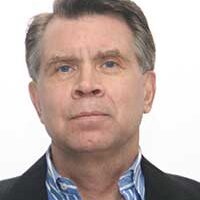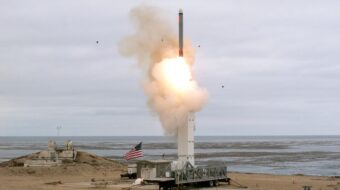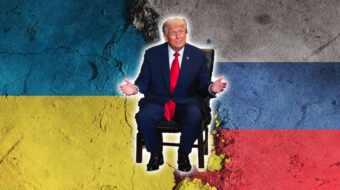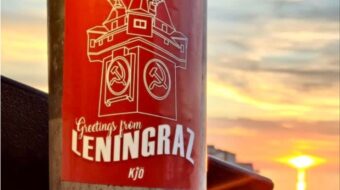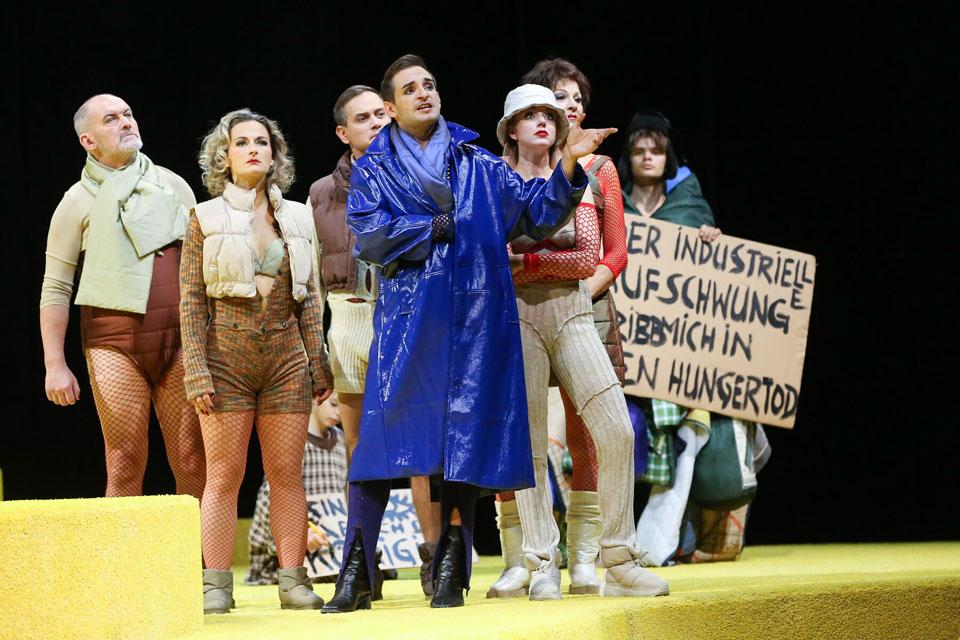
VIENNA — It’s hardly the ruined, devastated postwar rubble that was the backdrop of the most famous film shot in Vienna, The Third Man. But in more subtle ways Europe in general, and Austria’s capital city in particular, is showing signs of deterioration. After two years of a COVID lockdown, and now with the price cap on Russian oil and natural gas which has prompted in return a cutoff of that supply from Russia, there is a general air of belt-tightening and despondency as well as an unleashing of right-wing sentiments in the wake of these twin catastrophes.
The belt-tightening is everywhere apparent. The museums cut back on Christmas blockbusters and instead tried to make up in ingenuity what they lack in budget. The Leopold Museum’s feature Vienna 1900 displayed works by Klimt, Schiele and Kokoschka in an exhibition that simply looks like a regurgitation of past exhibits using the fin-de-siècle 1900 label to group them under a new heading of the turn to modernism, The Kunst Historisches (Art History) Museum, which in the past has featured blockbusters highlighting Titian, Caravaggio and Bruegel, this year tried, in avoiding the high price of borrowing and insuring works, to trace the history of competition in art in its “Idols and Rivals” exhibit, which featured an array of replicas and reproductions on a topic that might have dealt more strongly with the pressures on artists to produce salable commodities in a capitalist art market but which instead focused on individual rivalries. Best moment was an etching of the art historian Giorgio Vasari and Michelangelo visiting Titian’s studio, at which time Michelangelo, peering over the master’s shoulder, is said to have remarked that the Venetians, famous as colorists, still have not learned how to draw.

The New Year celebration was also muted. Pre-COVID, the city had sponsored nine stages with various kinds of music ranging from Viennese waltzes in the city square to hip-hop to rock, but this year cut the display down to five. A highlight of past New Year’s was a broadcasting outside the world famous Staatsoper, the national opera house, of the New Year’s Eve perennial operetta Die Fledermaus and the next day on the same screen the world-famous Vienna Philharmonic Concert. This year the events took place but were not broadcast outside, and thus remained only the province of the elite, though the concert in truncated form is broadcast on public television stations across the world.
The most interesting exhibition was one of the smallest, a collection of 50 Surrealist pieces– sculpture, paintings and sketches–at the Sigmund Freud Museum, which recounted the sometimes troubled relationship between Freud and the Surrealist capo André Breton. Freud remained skeptical about the surrealist project, which he claimed dealt only with the manifest, or overt, content of the dream, whereas he was interested in the latent, or hidden, content. But it’s easy to see that in fact the two benefited each other with Surrealism helping to popularize Freud’s discovery of psychoanalysis and his discovery of the unconscious enlivening and invigorating the art world with a plethora of startling images. Also on hand at a revamped version of the museum, which boasted two rooms consecrated to Freud’s daughter Anna’s practice in the apartment alongside his, was Freud’s correspondence with Einstein on the subject of the uselessness and destruction of war in the era between the two world wars. Their warnings went unheeded both in their time and today as we draw ever closer to global nuclear war.

The other most interesting exhibit was at the Welt or World Museum on the subject of Oceans. Collections. Reflections. The Welt or Ethnographic Museum featured the work of New Zealand Maori artist George Nuku. The work, in exquisite paintings and sculptures, detailed the interdependence of the Maori on the ocean with each construction of a boat or a whale bounded by plastic bottles, indicating the way waste and the petroleum industry are devastating the livelihood and sustainability of the Maori. Elsewhere, the exhibition described how in the 18th century New Zealand tribesmen had visited Vienna as capital of the Austro-Hungarian empire and asked for aid as they were about to be invaded by the British. The emperor granted them a printing press which they used to print leaflets and testimonies warning of the impinging invasion. Helpful, yes, but also a way of exonerating the empire from its colonial role in the conquest and colonization of the peoples of eastern Europe.
3PO
The Volksoper, or People’s Opera, which performs light opera, operetta and musicals, featured a strikingly modern version of Bertolt Brecht and Kurt Weill’s Threepenny Opera with the beggars dressed in the gaudy costumes of internet influencers and the thieves arrayed in the equally outrageous apparel of digital entrepreneurs. This element of the production emphasized the continuity between scammers of different centuries. What did not work was the overwrought Don Juan in Hell final death of the lead thief and cutthroat Mack the Knife which attempted to replace with smokescreens and stagecraft Brecht’s more radical ending of having the injustice of the play solved by royal decree granting him freedom and a lifetime pension, which was designed to call attention to the falseness of Dickensian and other deus ex machina endings of numerous works which undercut the social critique throughout those works. The trope persists today, not only in fiction but also in the belief that billionaire philanthropy will in the end save the world, even as it adds to their own wealth.
The city, dotted with metros, buses and trolleys, often voted the most livable on the planet, continues to have extraordinary public transportation and affordable housing, with the average price for a roomy one-bedroom, in apartments just outside the center ring, being 767 euros. Sixty percent of its population live in subsidized housing, a tribute to the post World War I affordable housing boom led by first Socialist and then Social Democratic administrations. But as everywhere on the planet, there are ominous sightings of the ever-present monstrous cranes, harbingers of the coming of large condos that will force the prices up everywhere in the city.
There is also a disturbing right-wing renaissance even in this most cosmopolitan of cities, the result perhaps of the support for the fascist elements in the Ukrainian government and soon to be aided by the overflow of NATO arms that, untracked in that country, are making their way across Western Europe, where a right-wing planned coup was recently thwarted in Germany, and surfacing as far as Africa with Nigeria’s president announcing those arms have already reached terrorist groups in that country.
The Austrian History Museum, opened in 2019 and recounting Austrian events from after World War I to the present, featured an exhibit titled Disposing of Hitler: Out of the Cellar, Into the Museum. The Austrian criminal code bans any material that could be used to “perpetuate the aspirations” of any Nazi organization, but National Socialist paraphernalia– books, swords, photos, postcards–exists everywhere and is often put up on eBay. The exhibit consists of illustrations of this memorabilia and asks visitors whether it should be preserved, sold, or destroyed. Overwhelmingly the response, aided by the museum itself which presented an argument for a museum being a repository of historical memory, was “Preserve,” with no “Destroy” and an occasional “Sell.” The exhibit thus functioned as a part of the path on the way to normalizing this hateful junk, on the argument that “it’s part of our history,” the same argument propounded almost always by right-wing pundits and used to attack the pulling down of slave owners’ statues in the wake of the Black Lives Matter movement.
The Staatsoper’s version of Wagner’s The Master-Singers of Nuremberg, at over four-and-a-half hours the longest opera in the standard repertory, missed a chance to address the anti-Semitism and championing of Aryan virtues which made it not only a hit but the only opera performed at the Bayreuth Wagner Festival in Hitler’s darkest days of 1943 and 1944. In the work, the proud German blond clean-shaven novice has to out-sing the hard-hearted bearded technical master for the hand of a German maiden. The Staatsoper chose to simply recreate the work, putting its effort into painstaking reconstruction of the 16th-century milieu in which the work is set, seemingly oblivious to its historical uses. The opera is a fascinating meta-mediation by Wagner on the art of composing and singing, but it cries out for a modern retelling which ironizes and criticizes its original bigotry and the uses to which it’s been put. Recreating the period does not negate that history but simply suppresses it in an era in Europe where it is more alive than ever.

Finally, Vienna also has, as is popular everywhere in Europe, a new immersive experience in the center of the city titled Mythos Mozart, 3D recreations of Mozart’s death, his city Vienna in 1791 at the time of his writing The Magic Flute and the creation of his most famous musical number “A Little Night Music.” In general, these “immersive” exhibitions flood the viewer with images, but after the flood, one knows little more about Mozart and his world at the end than at the beginning. The last room is a kaleidoscope of random images assaulting the viewer on all four walls, the ceiling, and the floor. A little girl, in response to this stultifying collage herself got on all fours, and raised one foot up against the wall as though she were a dog out for a walk doing its business. That little girl is going to make an excellent critic.
The beating heart of the city, though, despite the rightward tilt and the wartime austerity, is still its cafés. Café Central was a haven for writers and once the home of Freud, the novelist and journalist Joseph Roth, the subject of an exemplary new biography titled Endless Flight, the anti-war critic Karl Krauss, and the playwright and lampooner of the bourgeois Arthur Schnitzler. Café Museum, home of the 1900 artists Klimt, Schiele, and Kokoschka; and Café Mozart, meeting place of composers and opera singers, and perhaps of Arnold Schoenberg and Albert Berg as they created the “new” atonal music. These are now all packed with tourists but still contain the memories of times that may hopefully be revived and prevail over the war clouds that now hang so heavily over Europe.


